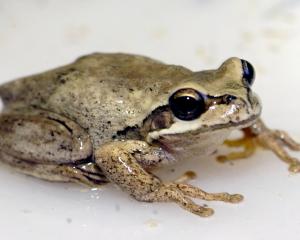
I recently read Justin Tipa’s (Kai Tahu/Ngai Tahu kaiwhakahaere) Waitangi Day speech to Prime Minister Christopher Luxon and the Onuku marae (Opinion, February 11).
I was particularly intrigued by his reference to a High Court claim Ngai Tahu have lodged with regard to the freshwater resources of their takiwa, which encompasses the majority of Te Waipounamu/South Island (apart from the far north of the island), with the aim of designing a better system for managing these resources.
It is true that Otago does have some freshwaters of very high quality – but these are largely in those parts of the region where the waters originate in native forest and high-country tussock land in the conservation estate, such as the catchments of the Dart and Rees rivers feeding Lake Wakatipu, the Makarora and Matukituki catchments feeding Lake Wanaka, the Hunter catchment feeding Lake Hawea , the upper Manuherikia above Falls Dam, and the Maclennan catchment in the Catlins district.
However, one only has to wander through Otago, to fish or hunt waterfowl, or to find a place with clean water to swim in or from which to gather kai, in order to observe the parlous state of many of our water bodies.
In the Maniototo basin, Taieri River water quality degrades rapidly from good to poor within a remarkably short distance below the outlet from the gorge at Stonehenge. By the time the river reaches Waipiata, the water quality is as bad and, on some occasions, worse, than that recorded on the Lower Taieri.
It is no secret that the prime reason for this is the predomination of intensive dairy farming, in this vicinity, without the necessary riparian management and protection of source areas such as wetlands, springs and swales.
This is not to ignore the good work that the Tiaki Maniototo group is doing in this regard, but a more comprehensive and permanent programme is required (Tiaki Maniototo’s funding runs out later this year).
The Upper Taieri Wetland complex is of national importance, but the edges of the complex have been eaten into over the last 30 or so years and there are now many edge areas growing ryegrass and clover, rather than carex and rushes. The farmers of these areas are wont to wonder about the propensity of these to flood during winter and spring.
In fact, some of the more recent arrivals in the valley may never have seen them flood before this last year. These areas should simply never have been drained and developed. What is required, in the long term, is for them to be retired from farming and restored to native vegetation.
The ORC’s Regional Plan: Water (RPW) has given the complex a measure of protection and this likely would have been increased in the proposed Land and Water Plan, now stalled. The previous government’s stock-exclusion regulations were also a positive step but neglected to provide for this activity to be used in a controlled fashion in order to maintain wetland values, such as short turf areas for wading birds and waterfowl.
It is to be hoped that the exclusion from fencing this complex that was granted by the previous government can be used in such a fashion, with electric break-fencing and/or virtual fencing stock halters, to provide the necessary wetland control and management, rather than grazing again becoming just an adjunct to adjoining farming operations.
ORC’s river water quality report, prepared in preparation for the proposed LWRP for the Taieri Freshwater Management Unit, notes that water quality is "… generally good, however some lower Taieri plain tributaries are degraded. Some sites here have among the poorest water quality in the Otago region …".
The report notes that about half of the 22 monitoring sites on the river did not meet the required NPSM standard for suspended sediment. Further, that Lake Waihola usually has "C" band results for nutrients and algae, consistent with the nutrient-enriched state of the lake, which experiences episodes of nutrient blooms.
The wetland complex, surrounding Lakes Waihola and Waipori is also of national importance, and is also protected by the wetland provisions of ORC’s RPW. It has been subject to the same piecemeal eating away of its margins for agricultural development that the Upper Taieri wetland has suffered.
The Manuherikia River is another example – bacterial water quality is excellent above Falls Dam, but, exacerbated by low flows, by the time the river reaches Ophir and Galloway, bacterial water quality is below the national bottom line (NPSFM). The same is true of all tributary sites below Falls Dam.
It is therefore obvious that Otago’s freshwater resources are in a far from satisfactory overall state. A better system is definitely required, given the present state of these resources, both in quantity and quality.
So, I say more power to Kai Tahu with their High Court action. If they succeed in convincing the government to join in a partnership to more sensitively manage our freshwater, that would have to be good for everybody.
— Murray Neilson is a trustee of the Clutha Fisheries Trust, a former Fish & Game councillor and a retired Department of Conservation freshwater technical support officer.











